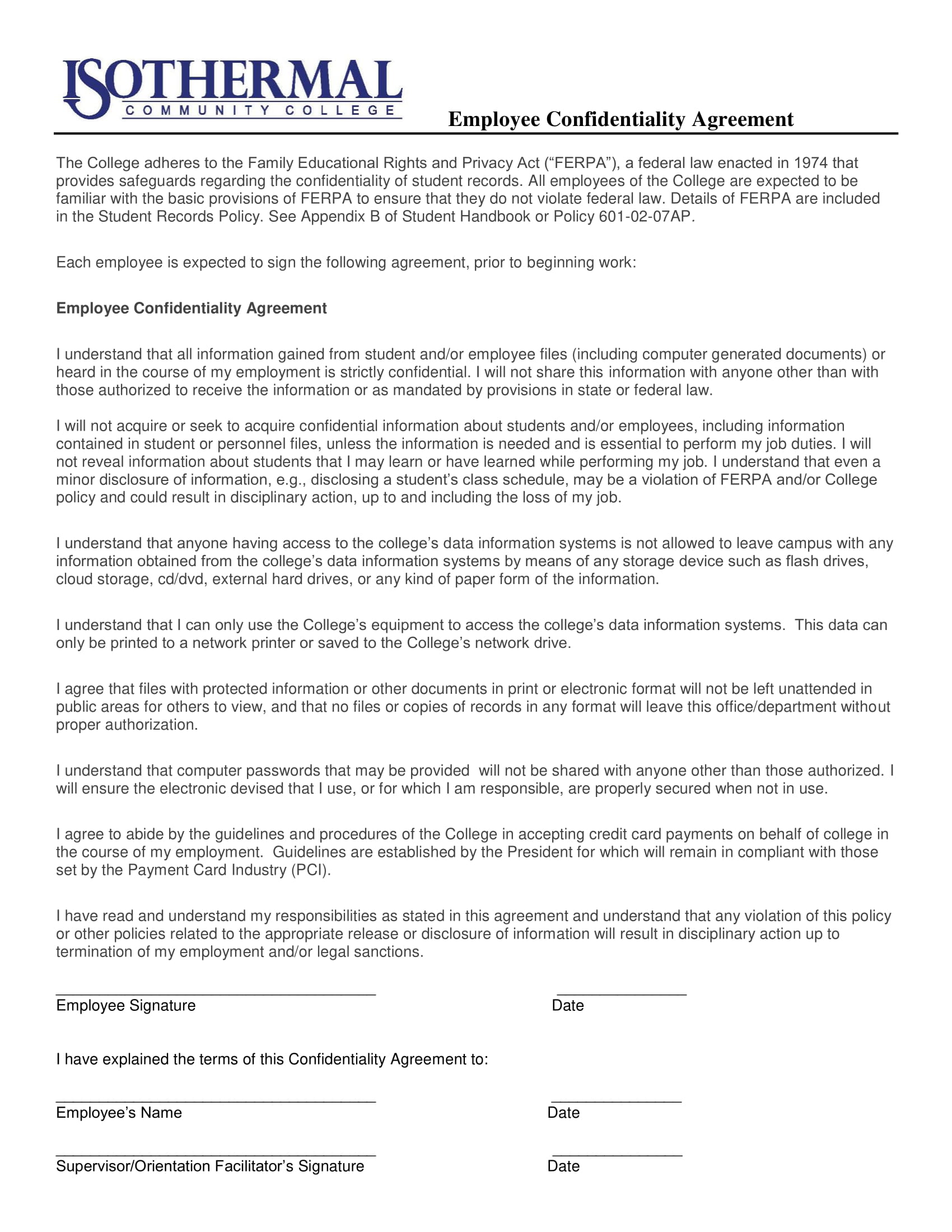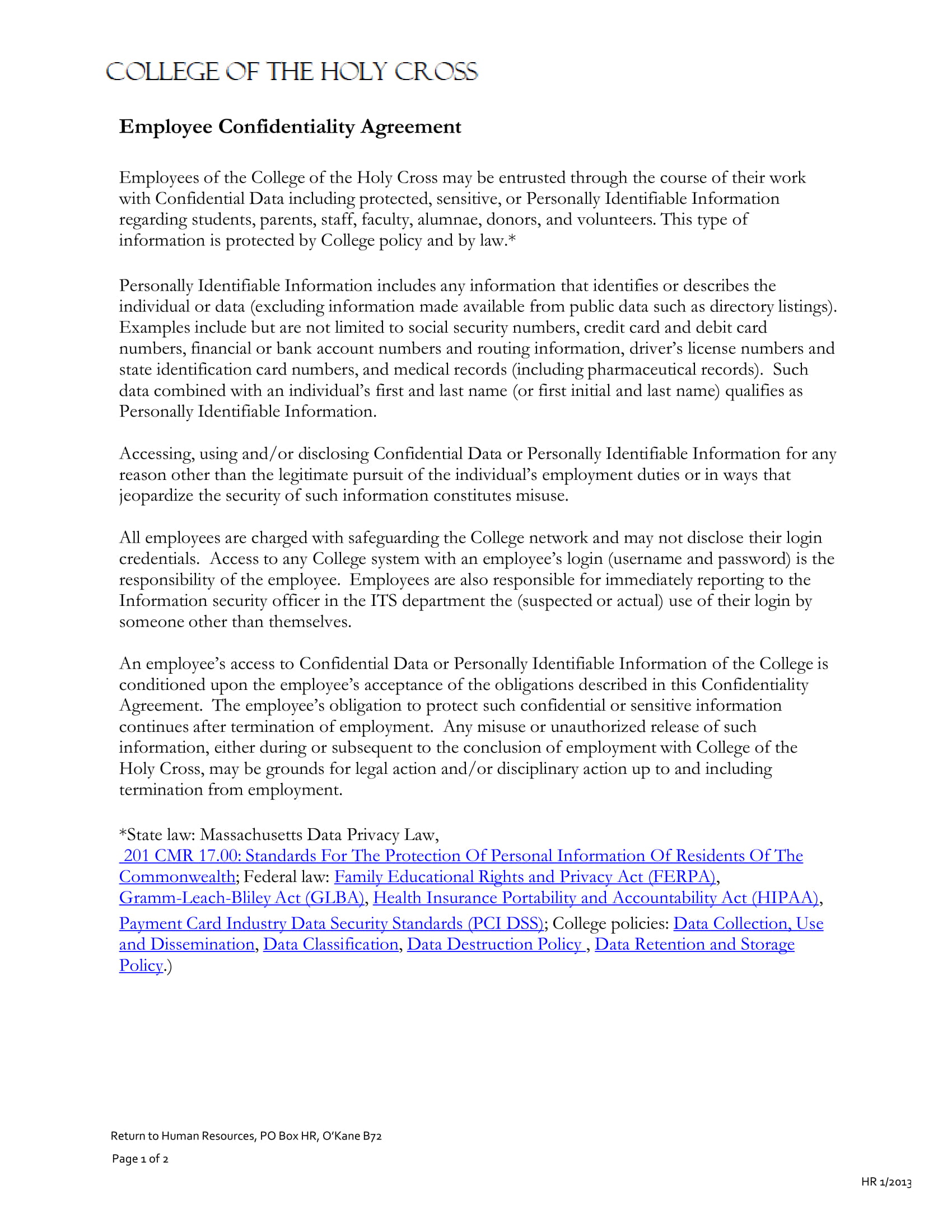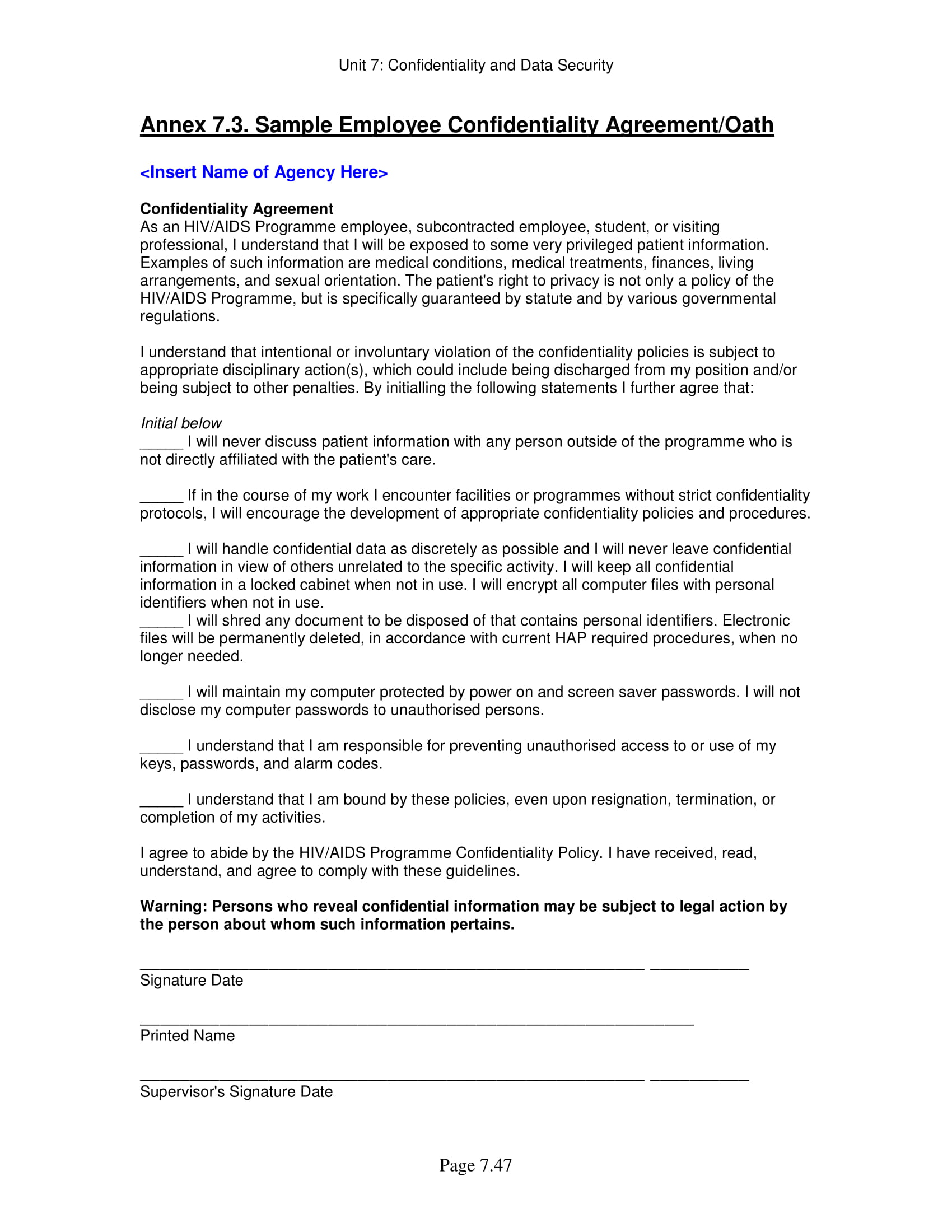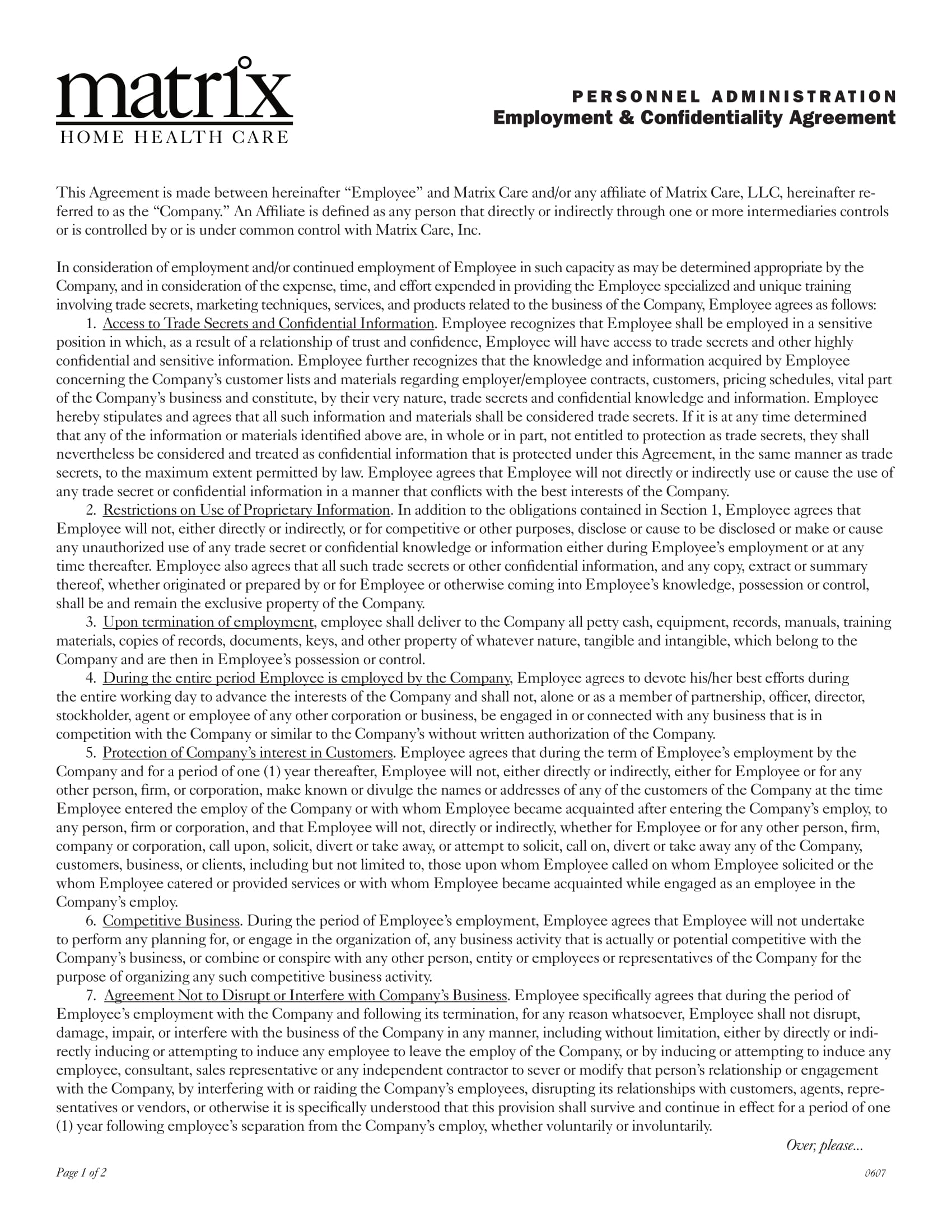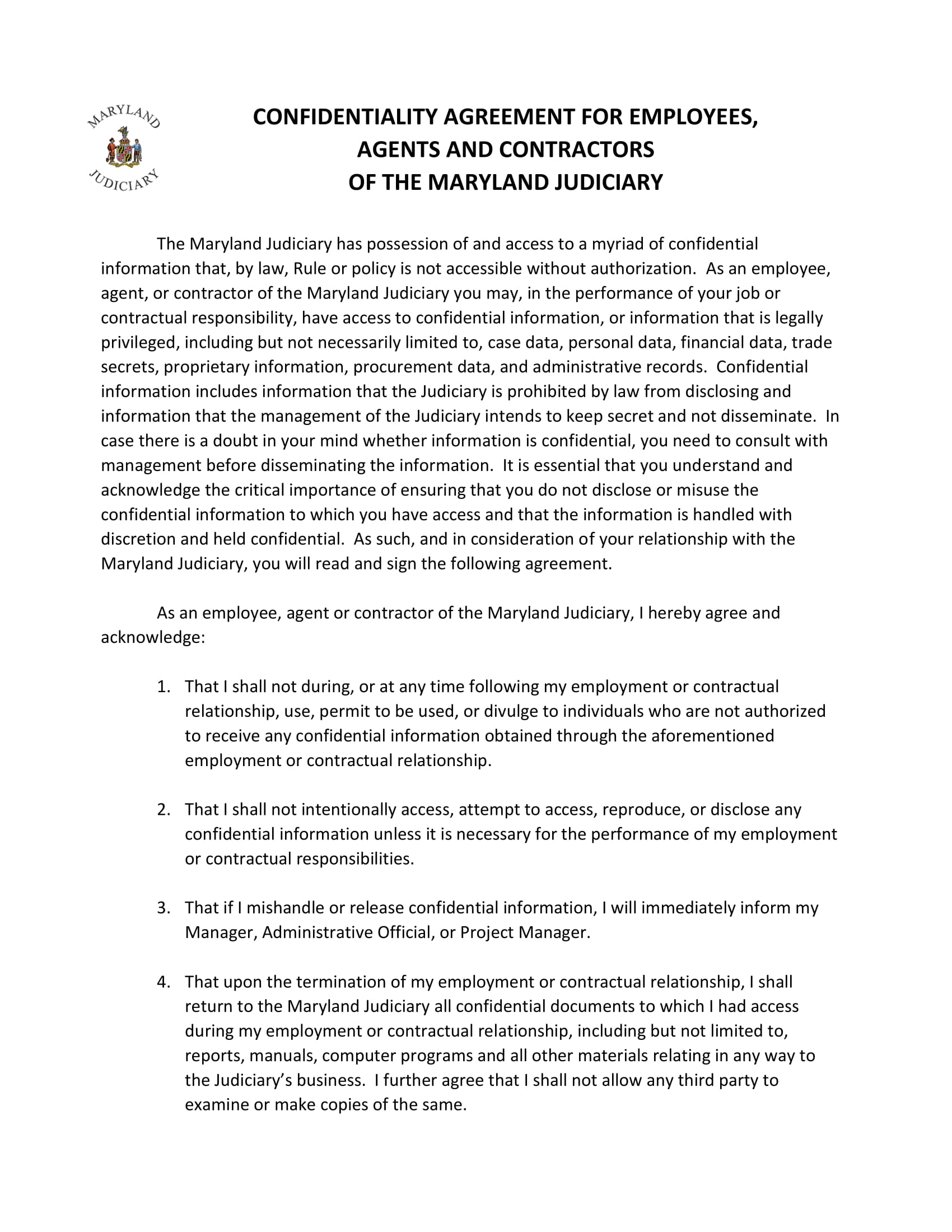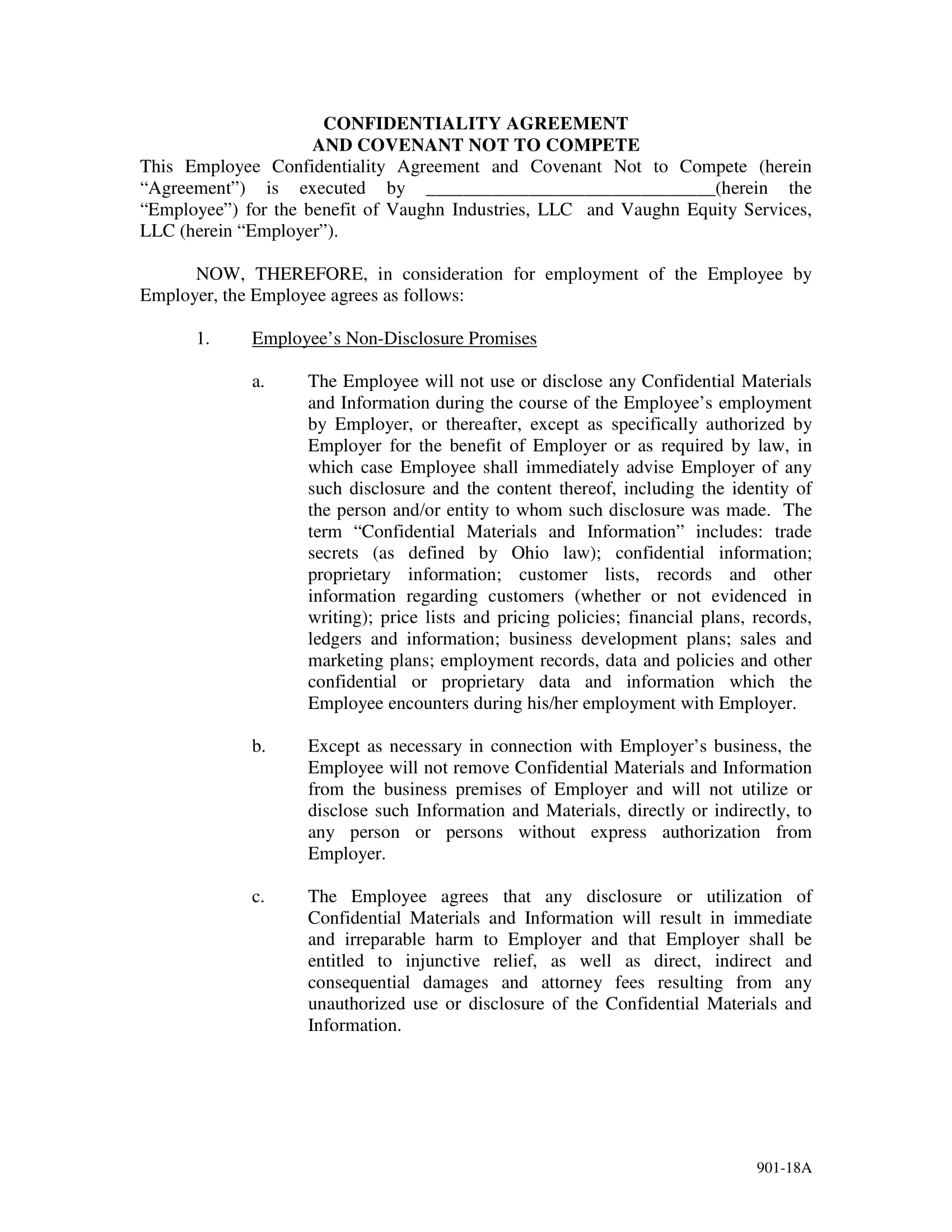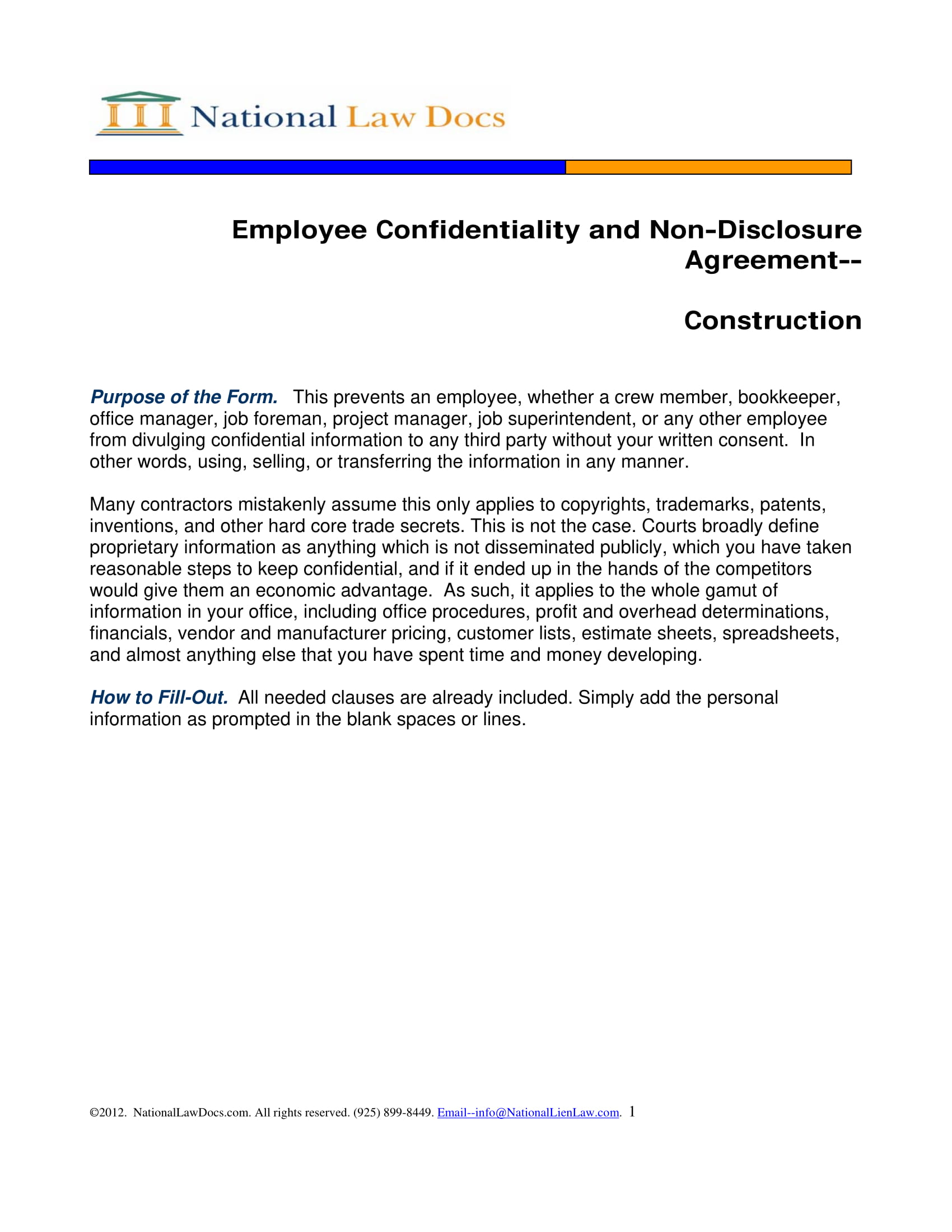11+ Employee Confidentiality Agreement Examples
Any proprietary, private, and confidential information of a business must be protected by its employees. It can be easy to say but it is actually hard to implement. This is why the terms and conditions for confidentiality must be put into writing. Simple confidentiality agreement examples can help strengthen the relationship of the employer and the employee in the long run.
Since regulations, policies, and expectations with regards to confidentiality are already set, entities within the employment transaction can be more aware of what they should and should not do.
As an example of a written contract that is legally binding and enforceable, you have to make sure that you will include accurate and precise information in the employee confidentiality agreement. You also have to consider the way that you will present the overall document content. You can refer to the examples that we have listed in this post if you need formatting guides and content references.
Sample Employee Confidentiality Agreement
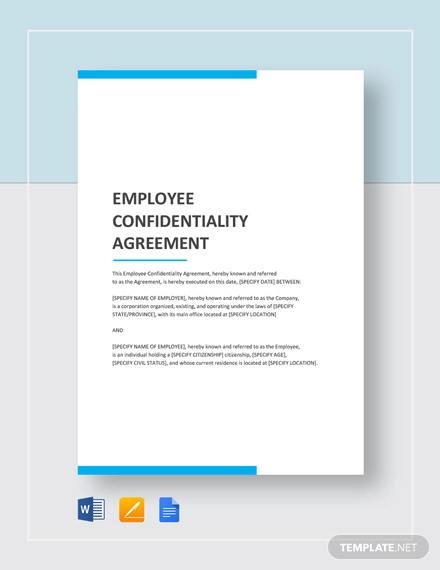
Employee Confidentiality Agreement
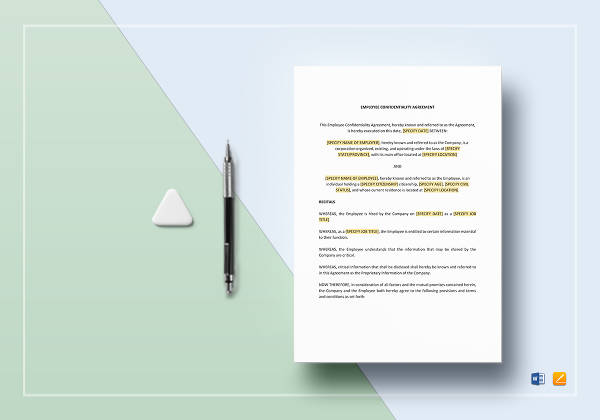
Detailed Employee Confidentiality Agreement Example
Standard Employee Confidentiality Agreement Example
What Should a Basic Employee Confidentiality Agreement Contain?
A confidentiality agreement between an employee and an employer must be respected, honored, and executed accordingly within the entirety of the employment relationship. It is important for all the details of the document to be looked into so that proper terms can be set when it comes to the protection and disclosure of confidential business information. You may also see mutual confidentiality agreement examples.
A confidentiality agreement can be at its best if it is comprehensive and if its content are well-defined and thoroughly discussed. Here are some of the information that must be given focused with, discussed and highlighted in a basic employee confidentiality agreement:
1. An employee confidentiality agreement must have a clear simple statement that the employee should not disclose any information that is deemed or considered confidential by an employer. There are different kinds of confidential information that can be included in this discussion depending on the work position of the employee and the particular types of confidential details that he or she will be given access with.
2. An employee confidentiality agreement must also have a clause about the particulars of the confidential information that will be supplied by external parties and other entities that are involved in the business operations.
As an example, customer details for membership purposes must be kept in private and shall only be used on transactions that the customer has agreed upon. This also goes with the protection and security of confidential information coming from suppliers, business partners and service providers. You may also see HIPAA confidentiality agreement examples.
3. An employee confidentiality agreement usually contains a non-compete clause. There are companies who prohibit their employees from working for businesses with the same nature of operations after leaving the company for a particular period of time to ensure that confidential information will not be relayed and will not even be usable to the new employer of the individual. You may also like non-disclosure agreement examples.
Aside from prohibiting resigning employees to work for a new employer whose operations and business processes are the same with that of the current employer, there can be instances where total prohibition for professional opportunities in the same industry may be specified in an employee confidentiality agreement. This is very common for supervisory and managerial positions. You may also check out business agreement examples.
4. An employee confidentiality agreement must have a precise list of all the confidential information and the allowed ways on how it can be designated, used, and disclosed by the employee. It is essential for proper rules to be set so that the employee can be well-guided within the entire undertaking.
5. An employee confidentiality agreement should directly present the ownership that the company has with regards the details that are from its operations, programs, activities, and business processes. This can clarify issues and concerns on why it is necessary for specific information to be considered as confidential. You might be interested in sales agreement samples.
Employee Confidentiality Agreement and Oath Example
Temporary and Contract Employee Confidentiality Agreement Example
Employment and Confidentiality Agreement Example
Confidentiality Agreement for Employees, Agents, and Contractors Example
Confidential Information Usually Seen in an Employee Confidentiality Agreement
As a business entity, you have the right to maximize the usage of your employee confidentiality agreement so that you can protect and secure your intentions. However, you have to keep in mind that you should also consider the rights that the employees are entitled with.
Depending on the kind of confidential information that you will allow employees to handle, the content of your employee confidentiality agreement can be tailored to your likeness. The development of the agreement examples also base the activity with the existing protocols, regulations, and rules of the business. A few of the confidential information that are usually seen in an employee confidentiality agreement include the following:
- The list of the leads of the business that are necessary to be tapped and looked into so that they can be converted to actual customers.
- Any financial details or data that are presented in the financial reports, summaries, worksheets, and statements of the business.
- The specifications of the transactions that a particular customer underwent and the history of the professional business-to-client relationship being developed within the company’s operations.
- The content of the business plan of the company which can include strategies, tactics, internal and external research results, practices, and action plans.
- Any information about the processes, products, services, and other undertakings that the employee has developed or immersed in within his or her employment with the company. The personal, contact, and other basic information of the current customers of the business which can be used for marketing, relational, and updating purposes.
- The description of the product development processes as well as the highly confidential procedures that the business implements to ensure that their product offers will be different from those that are already offered within the same marketplace. You may also see letter of agreement examples.
- The details regarding the intellectual properties of the business including those that are under specific copyrights and patent rights.
Some employee confidentiality agreements deal with just one issue or one item of discussion. However, especially if the work position that will be given to the employee scopes a wide range of processes and activities, there is a high chance that two or more confidential information will be included in the document’s content. You may also like purchase agreement examples.
Employee Confidentiality Agreement Example
Employee Confidentiality Agreement and Covenant Not to Compete Example
Employee Confidentiality and Non-Disclosure Agreement Example
Employee Non-Disclosure and Confidentiality Agreement Example
Useful Tips When Building an Employee Confidentiality Agreement
Making an employee confidentiality agreement has its own hurdles and challenges. This is the reason why you have to be prepared whenever you already decide to create this document. Here are some of the useful tips that can allow you to build an employee confidentiality agreement in the best way possible:
- Just like when making basic non-disclosure agreements, you have to make sure that you will set the terms and conditions of the employee confidentiality agreement with clarity. It is essential for all the statements and discussion within he document to be direct to the point, understandable, and well-presented.
- Do not be vague when explaining particular processes, terms, and definitions. You have to be specific as any vague information can cause misunderstandings. Misleading information usually makes the employee confidentiality agreement a weak document and can turn disputes to court cases in the future. You may also see service agreement examples.
- Be organized. Aside from looking into the content that you will discuss in the document, you also have to take note of your presentation. Use clauses, headings, spaces, and other items that can make the document look professional, formal, and appropriate for business transaction. You may also like partnership agreement examples.
- Ensure that the employee to whom the document will be given has the potential to fully understand the specifications that you will include in the employee confidentiality agreement. Avoid the usage of slang and technical terms unless necessary. You may also check out marketing agreement templates and examples.
- Review the document for a number of times before giving it to the employees. Before an employee can affix his or her signature in the document, you first have to make sure that there are no errors or mistakes that are present in the document.
- Try to observe existing employee confidentiality agreement examples. You can take note of how relevant information are listed and put together or how the layout of the agreements have been developed.
If you need help and assistance in developing both the content and format of the employee confidentiality agreement, feel free to use any of our downloadable examples as your references.
Browse through the selection that we have put together and assess which of the documents is the best in terms of alignment and relevance to the particular employee confidentiality agreement that you would like to develop.



